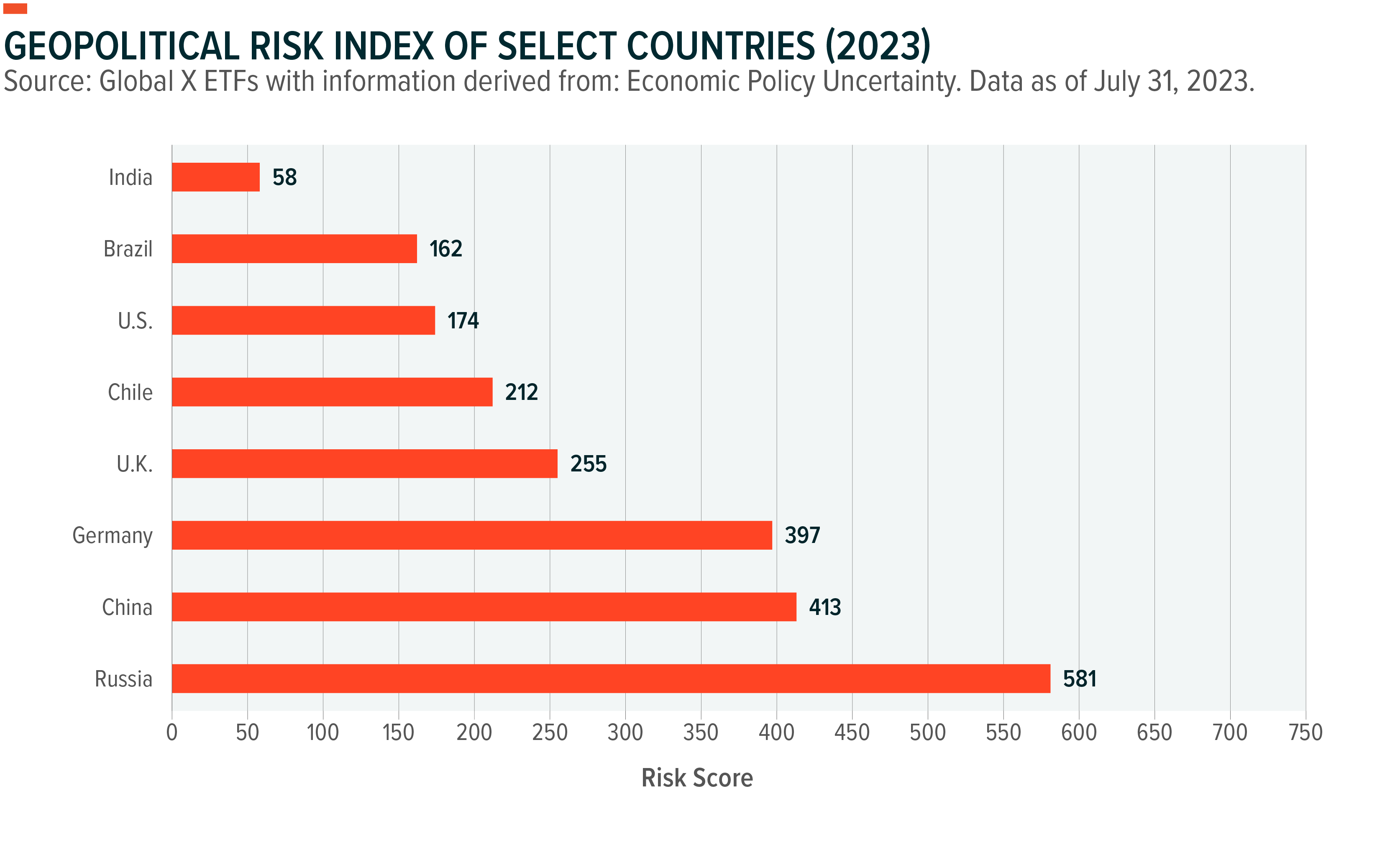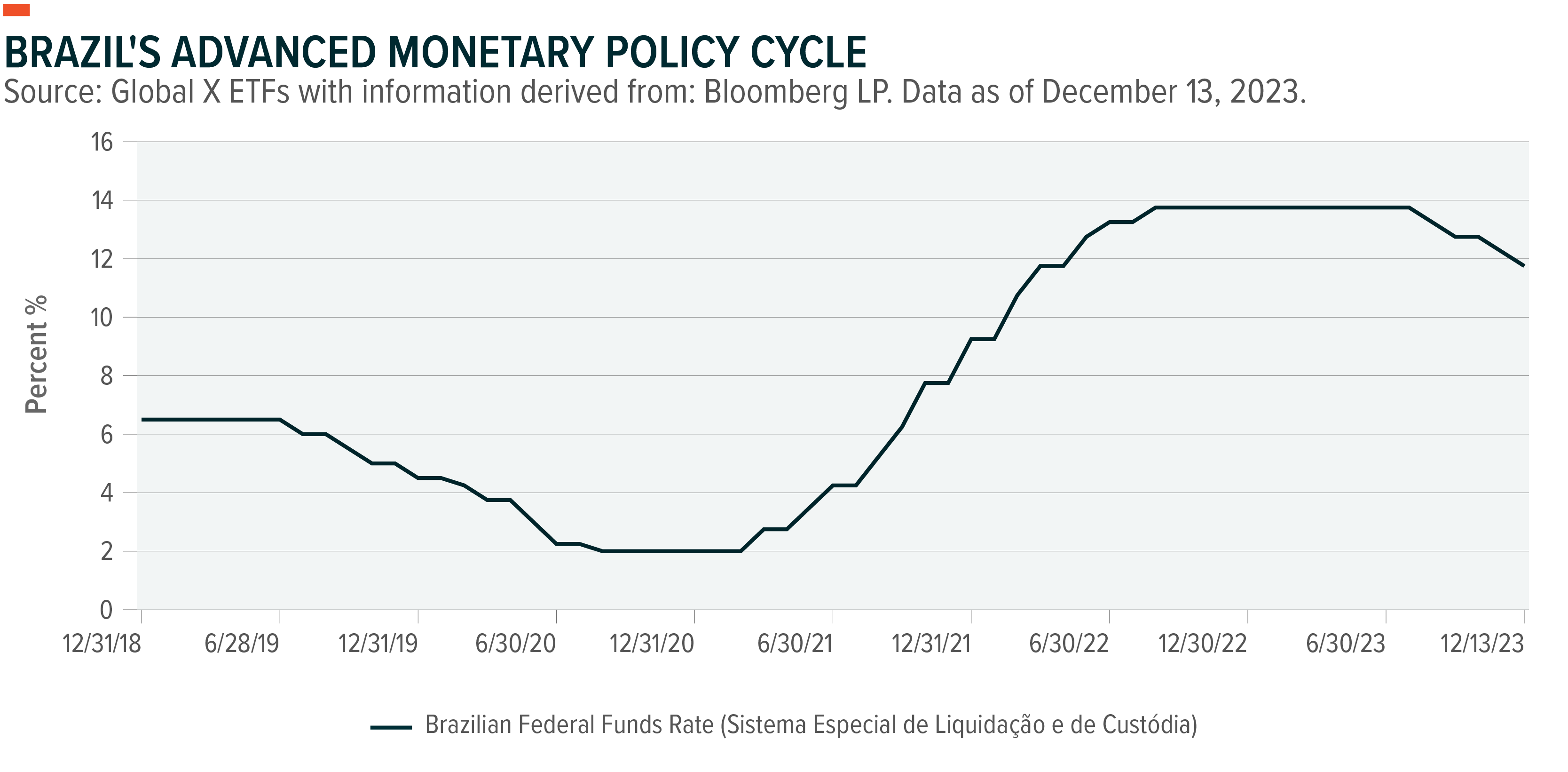We believe Brazil remains one of the most attractive cyclical opportunities in emerging markets (EMs), if not the world. Brazilian equities (as measured by the MSCI Brazil Index) rallied 32.7% in 2023 in U.S. dollar terms, and we believe this is just the beginning.1 Over 11% of that rally came from a stronger currency, and we are just starting to see the signs of earnings improvements.2
Numerous Reasons for Optimism
- Everyone Has Underestimated Brazil: GDP has grown above consensus for 14 consecutive quarters.3
- A Path to Investment Grade: Brazil is currently only two levels below Investment Grade status, and we see a path towards upgrades based on current fiscal reforms.4
- An Energy Powerhouse: Brazil plans to expand oil production to the point of being the fourth largest oil producer in the world by 2029.5
- A Consistent U.S. Dollar Buffer: Brazil has a buffer of U.S. dollars from its diversified commodity exports across iron ore, soy beans, cattle, and oil.
- Minimal Dollar Debt: Brazil’s U.S. debt finished last year at only 16.6% of GDP, down from 21% of GDP in 2020.6
- Happily Isolated: From a geopolitical standpoint, we see Brazil as relatively isolated from headwinds in Russia, Ukraine, Israel, Palestine, and the South China Sea.
- Advanced Monetary Policy: Brazil is already four cuts into the advanced portion of its monetary policy cycle.
- Discounted Valuations: Despite an 18% return on equity (ROE) and solid growth, Brazilian price to earnings (P/E) and price to book (P/B) multiples trade more than one standard deviation below their five-year historical averages with dividend yields above 7%.7
- Flows: We’re optimistic on flows moving into Brazil because of 1. The potential for locals to move from bonds to equities as interest rates come down; 2. The potential for international investors to step into the market with anticipated comfort around fiscal reforms; and 3. Brazil’s larger weight in EM ex-China products.
- U.S. Dollar Hedge: Historically, Brazilian equities have rallied roughly 5% with each 1% weaker move of the U.S. dollar (as measured by the DXY).8

Exploring the Current Opportunity: Valuations, Interest Rates, and Tax Reform
From a valuation perspective, Brazil trades at an undemanding 7.5x P/E ratio (the S&P trades at 19x!) and 1.3x book value.9 We believe this setup provides a strong margin of safety. Perhaps more exciting is that even if prices remain stagnant, the market also pays a 7% dividend yield.10 Optically, this makes sense, but the additional enthusiasm for Brazil comes from its prospects for positive earnings revisions.
Brazil’s key interest rate peaked at 13.75% in 2022, while inflation came down to roughly 3% in June, 2023.11,12 That translated into the highest real rates in the world. The combination of this carry trade, continuously lower unemployment (now in mid-single digits), and consensus upgrades to gross domestic product forecasts allowed the central bank to make four consecutive 50-basis-point rate cuts between August and December 2023, with signals that there was more room to go. This is important for four reasons:
- Brazilian companies levered in floating rate debt benefit from lower interest rates, as they shrink their balance sheets and lower net interest expenses. This translates into positive earnings revisions without any operational improvement.
- Brazilian local investors were recently able to benefit from earning 14% on government bonds. As interest rates come down and earnings yields (now 13.5%) show higher returns than fixed income, we could see a shift in local capital allocations away from bonds and into equities.
- Lower interest rates reduce the burden for borrowers and inherently reduce asset quality pressure on banks. According to our research, nonperforming loan formation for the banking system came down for the first time in two years in Q3, which we take as a positive sign looking forward.
- Lower rates will likely stimulate borrowing and spending across the entire Brazilian economy.
In the past six rate cutting cycles, we’ve seen the MSCI Brazil Index (USD based) rally in four of them and move down in only two.13 Importantly, those rallies have averaged roughly 96.7% upside, where the drawdowns averaged only roughly 17.3%.14 We like this setup!
We were also encouraged to see the Lower House approve a sweeping tax reform in December. This was the first reform to Brazil’s tax system in 40 years and unifies five different taxes into one VAT, which will then be divided into a federal tax and a state tax. This is a positive sign, in our view, as Brazil is reducing bureaucracy, improving efficiency, and showing that its government institutions are delivering on progress.

Conclusion
All told, we believe that Brazil stands out as a rich backdrop for investors, due to its large and diverse economy, abundant natural resources, growing consumer market, infrastructure development, and skilled workforce. Near term, we think that prospects are further brightened by attractive valuations and a monetary policy loosening cycle. We believe that investors should balance valuation multiples with a company’s prospects for both earnings growth and reinvestment rates, and we see many attractive opportunities for stock picking in Brazil.
 Malcolm Dorson
Malcolm Dorson Paul Dmitriev
Paul Dmitriev